How Can We Make Ecommerce Experiences Feel More Social?

While retail shopping is slowly coming back, it’s going to take a while before shoppers and retailers alike can fully reap the benefits of a social shopping experience. Rather than wait, this article proposes we bring socialization to the mobile ecommerce experience.
For many people, shopping can be a really fun social activity. I can recall fond memories of my own from shopping with others:
Walking around the outlet mall when me and my friends need a break from the beach on vacation. Visiting a local toy store with my friend and her kids, testing out as many of the toys and video games as possible. Talking to a fellow shopper about a particular item in the produce section we’re both fanatical about.
While in-person shopping is starting to make a comeback, it doesn’t really feel as sociable as it once was.
There’s not a whole lot we can do to change that (for now). But what we can do is bring a more social vibe to the ecommerce shopping experience. If people feel more comfortable and have gotten used to doing their shopping online, then why not?
This post isn’t about messing with what works in terms of good design and UX. Instead, we’re going to look at small things you can do as an ecommerce app designer to infuse some much-needed socializing into the digital shopping experience.
6 Features That Can Make Ecommerce Apps Feel More Social
Why am I bothering to suggest this? Well, retailers actually benefit from social shopping.
Max H. Brüggemann, the director of customer engagement for Capgemini Invent, explains one of the main reasons why in this Vogue Business interview:
“People tend to have a higher probability to buy when with another person or a group [because] a friend affirms decisions that one might not make when shopping alone, so the shopper has a reduced risk perception of the purchase which makes the activity more careless.”
I’d also argue that it’s more enjoyable when there’s someone else with you. Rather than rush in and out, you take your time perusing the racks and shelves to see if there’s anything that catches your eyes. It becomes more of an experience than an errand. And that increased time in store and attention paid to the inventory likely leads to more money spent.
But how exactly do we bring others into the ecommerce shopping experience? Here are six creative ideas to consider:
1. Product Galleries with UGC
You won’t be able to do this for every ecommerce app—especially ones that are brand new. However, for ones that have avid fans who love to take selfies (ahem… Millennials and Gen Zers), user-generated content could really level up the shopping experience.
Now, some apps will just embed an Instagram stream that shows off tagged posts of the retailer’s products. That’s fine, but it’s not really useful within the context of specific products.
So, a better way to bring in UGC is directly into product galleries. Here’s how Target does it:
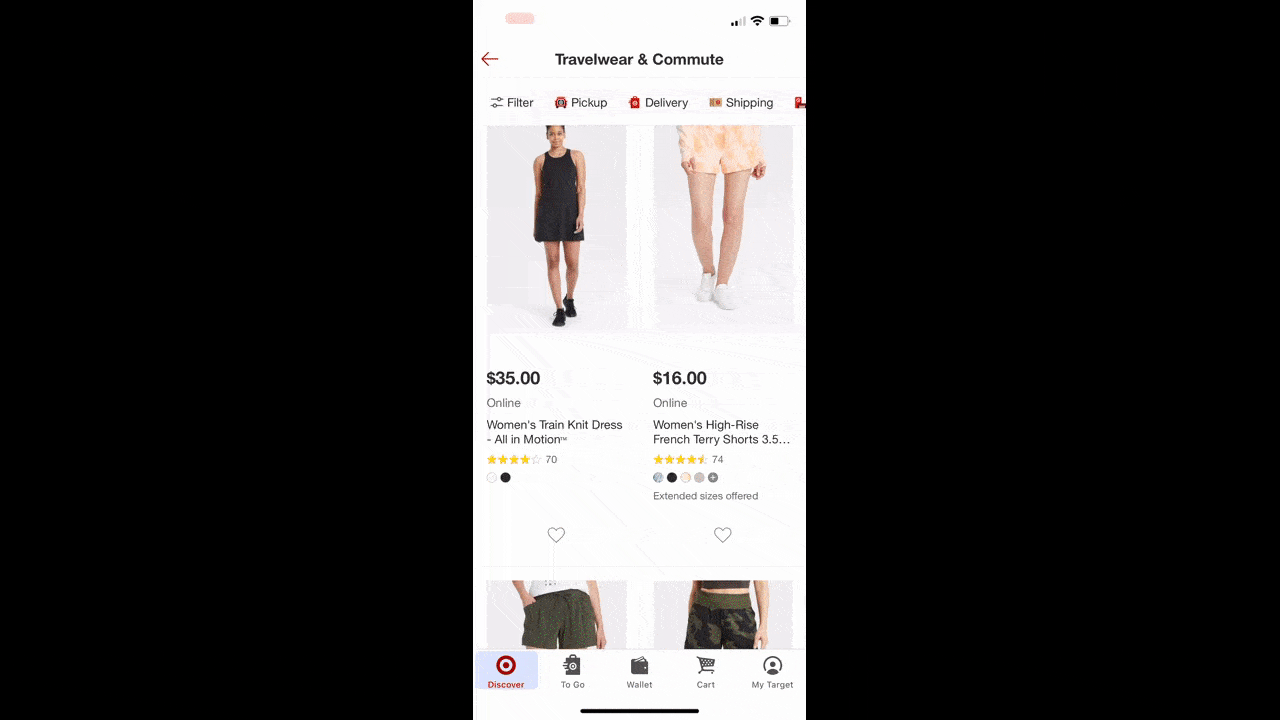
The first photos in the gallery are of the model wearing the product in the selected specs. However, the last photos in the gallery come from real customers who bought the product.
Even if Target customers don’t know these people, being able to see others wearing the clothes they’re interested in can improve their confidence in the product.
The Aerie app does something similar:

This isn’t one of those embedded UGC feeds. If a customer clicks on one of the images, they’ll see the customer’s post followed by a “Shop This Look” section:
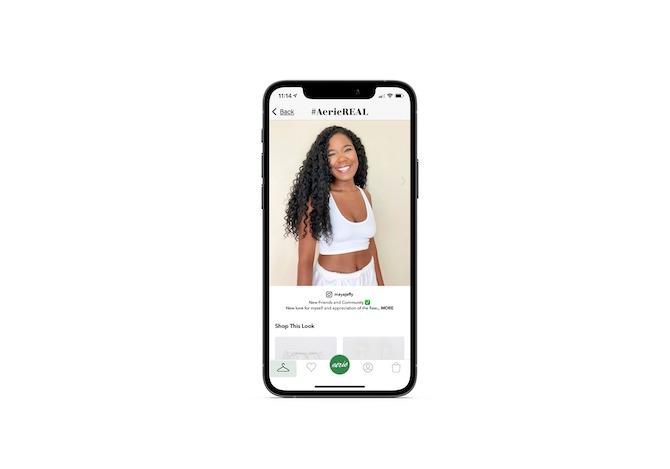
If someone is interested enough to click on a customer photo, you can bet they’d want to know where they could get the same clothes. And this feature helps them do that.
Even if customers don’t take advantage of the UGC feed, they’ll eventually find their way to it from Aerie’s product pages as we see here:
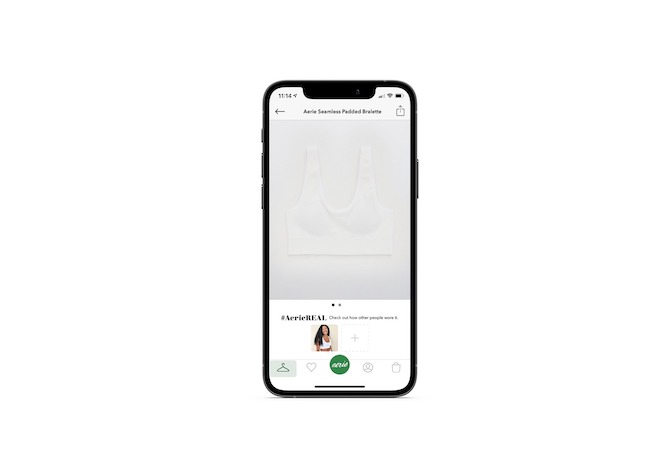
This is the same bra the #AerieREAL customer was wearing in the UGC. Notice how her photo and post are included below the product’s photo.
2. Customer Q&As
Not every shopper is going to have someone they know who wants to join in on the fun. Or who has first-hand experience with what they want to buy. That’s why customer Q&A sections can really come in handy.
Kohl’s has one on its product pages:
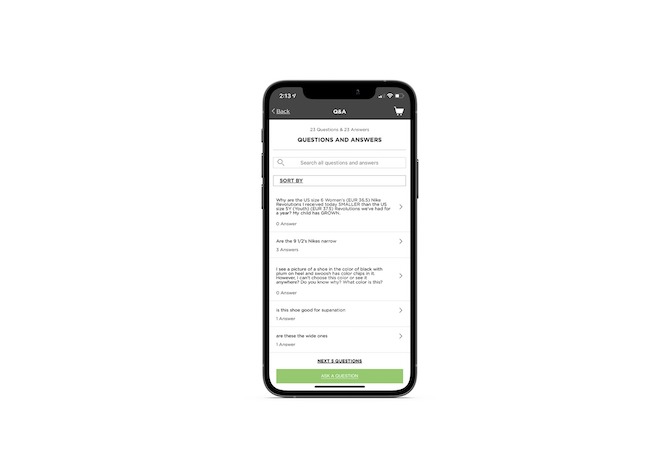
Unlike the reviews section that usually just gives customers an open field to leave their feedback and rating, the Q&A allows customers to get more specific.
Shoppers leave questions that’ll help them figure out if the product is right for them as well as to choose the right specs. Take something like shoes. While many shoe manufacturers might insist that their shoes are true to size, a customer who’s actually worn them is in the best position to attest to that fact.
And that’s exactly what we’re seeing here when the shopper asks “Are the 9 ½’s Nike’s narrow?”

While “Team Nike” chimes in to say that the shoes fit true to size, there are three customer responses worth looking at. The very last one disputes this fact and if you were to scroll lower, you’d see that the answer was upvoted which means it’s probably a valid point.
Considering shoppers trust the opinions of other customers more than brands, allowing shoppers to ask direct questions and customers to honestly respond can help improve the overall experience.
3. Social Sharing
Most of the ecommerce apps I looked at for this article include the standard mobile share-to icon next to their product photos. But something that small might be easy to miss when there’s already a lot going on within a product page.
If you want to encourage more users to share products with others, design it in a way so it feels more social.
For example, the VENUS app has a section on its product pages called “Get Social”:
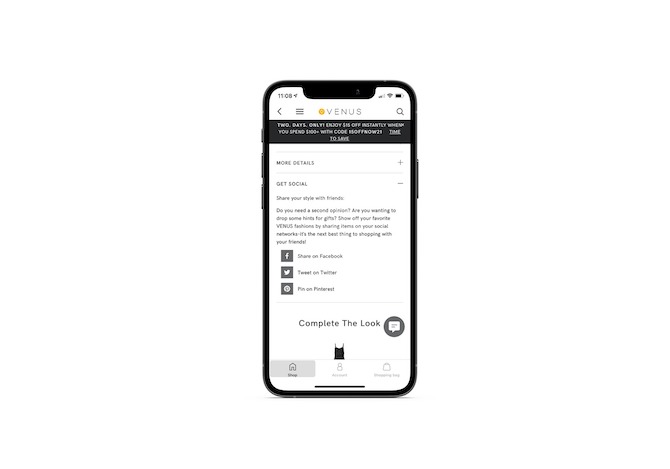
This section directly appeals to a shopper’s desire to get validation on what they buy. It then provides quick share links to Facebook, Twitter and Pinterest so they can share the item with friends and get their feedback on a platform where they’re already socializing with them.
THE YES is another app that makes social sharing part of the online shopping experience:
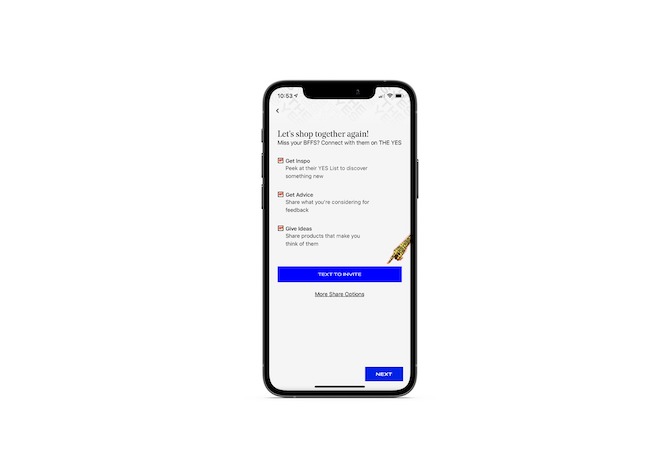
THE YES invites shoppers to shop together with their BFFs to:
- Get inspo
- Get advice
- Give ideas
Even if they don’t sync up with their connections from that screen, THE YES reminds them they can do so from the product page’s share-to icon:
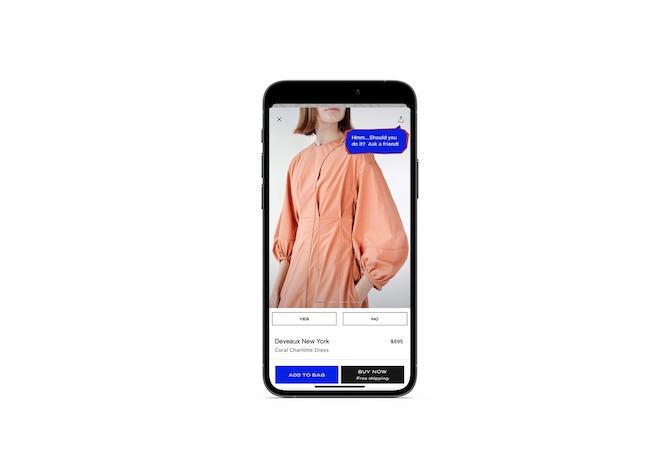
It’s done in a cheeky manner, too, with the pop-up quote bubble reading:
“Hmm… Should you do it? Ask a friend!”
If the shopper clicks on the share-to icon, they see this list of places to share-to:
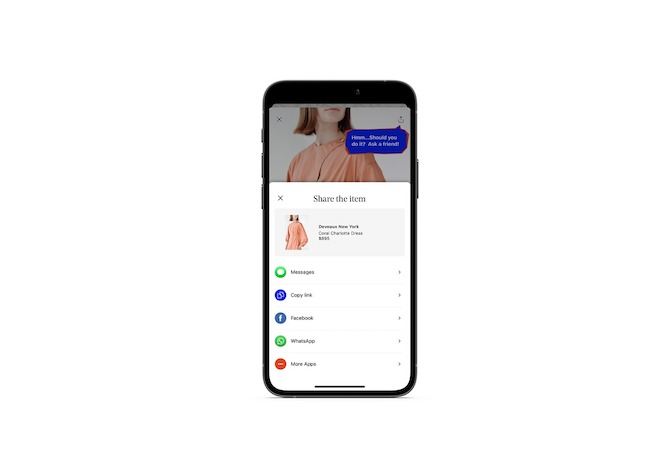
Rather than leave shoppers to sort through the usual list of shareable platforms in the default mobile share-to screen, THE YES has designed their own for quicker sharing to the most popular social networks.
4. In-App Community
One of the problems with giving shoppers external sharing links is that you’re usually directing them to another app. It’s still a good idea as it allows them to loop their real-life connections into their personal shopping experience.
However, if your ecommerce shop has a large customer base and a loyal one at that, building a community within the app is a good idea, too. That way, they can stay put to do their socializing and not get side-tracked by what’s going on on distraction-filled social media platforms.
Here’s an example from Cupshe:
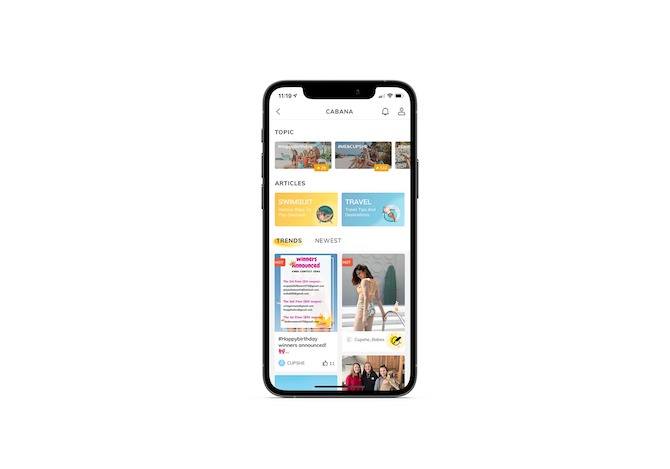
Its Cabana community members can:
- Look through trending UGC hashtags
- Read articles
- Explore swimwear trends
- Look at the latest UGC submissions
- Like, bookmark and respond to UGC
Sephora is another one with a bustling community of customers:

Within this community, Sephora members can:
- Create a profile
- Follow other members and collect followers of their own
- Create posts and ask questions, respond to others and start conversations
- Interact with others’ posts
- Send messages
- Join groups
- Look or sort through a gallery of posts and UGC
When you have a large enough community of regular, devoted shoppers, it makes a lot of sense to create an internal community where they can gather.
5. Shop Parties
I haven’t seen many ecommerce apps that allow shoppers to host and watch live-streaming shop parties. However, it’s a feature I discovered on the Verishop app and I think it has a lot of promise:

Customers can do one of two things here:
- Watch others’ live-streamed shop parties, which are usually a mix of unboxing videos, shopping hauls and tutorials
- Host their own shop party and invite friends and followers to join in real-time or after the party ends
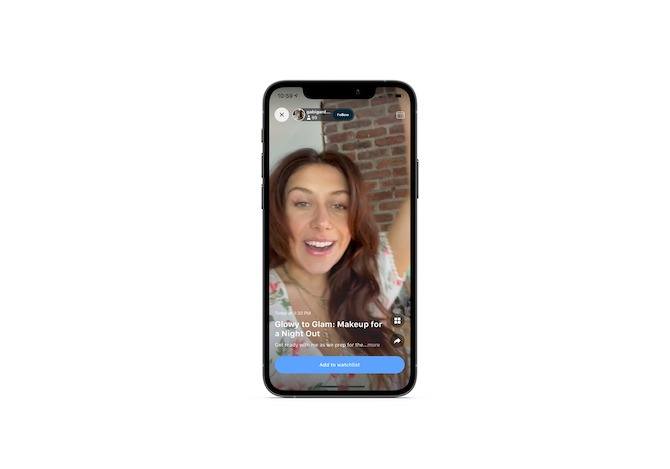
This kind of thing is going on already on social media platforms like YouTube and Instagram. Seriously, just search for “shopping haul,” “unboxing video” or “beauty tutorial” and prepare to be shocked by the insane amount of views and engagement these posts get.
If your store is popular with the selfie and influencer generations, and it has (or will have) a large enough customer base, this is a feature definitely worth exploring.
6. Group Gifting
This is another one of those social features I haven’t really seen much of, but I think group gifting would be a great idea for certain kinds of stores.
Here’s how it works in the Home Depot app:
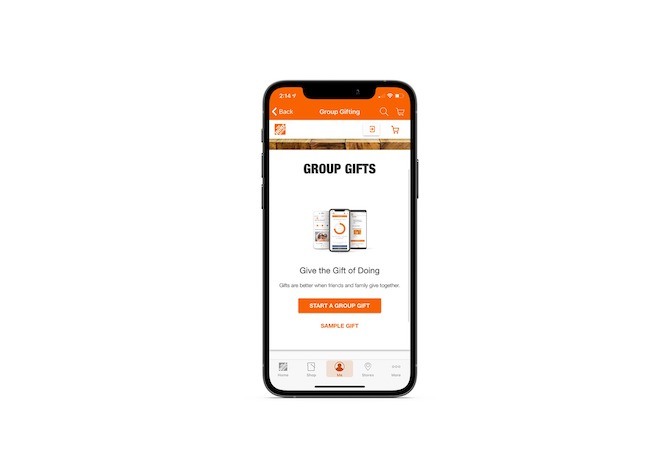
The Group Gifts feature allows customers to buy a gift certificate, customize it for the recipient and then raise money toward the gift certificate goal.
There’s actually quite a bit of setup that goes into it, though it’s probably not as much as the customer would have to do to get everyone to participate in person or on social media:
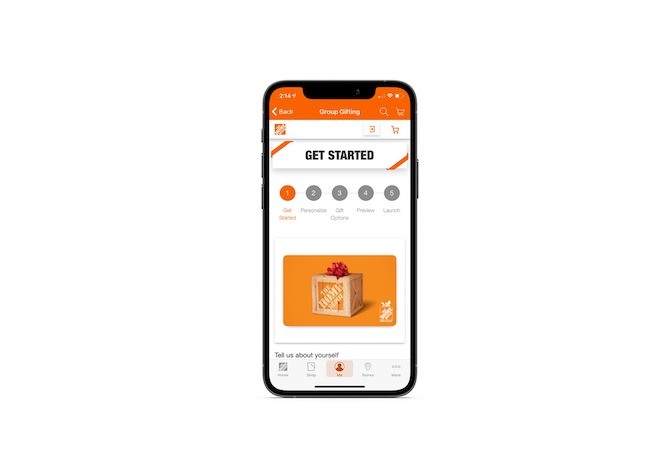
It’s a really cool concept for people who want to pool money together for a gift. For example:
- Office staff chipping in for someone’s retirement gift
- Students pitching in for a gift for their teacher around the holidays
- Family members coming together to give their graduate something they can use for their dorm room or first apartment
You get the point. So, rather than leave your customers to collect the dough on their own, your ecommerce app makes it easier for them to raise the funds and, later, get them out to the recipient.
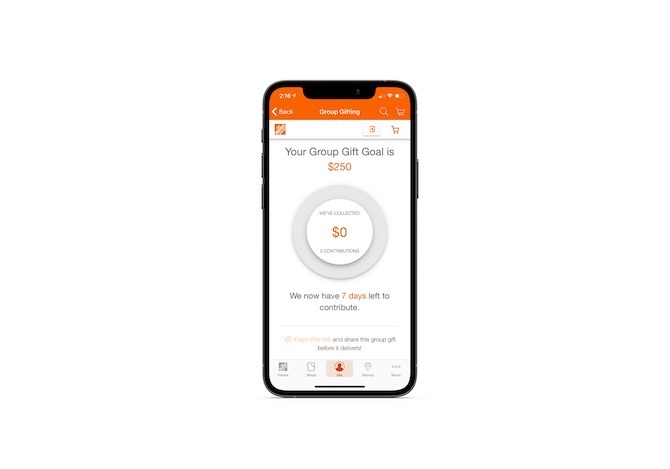
The example we looked at is specific to Home Depot. However, I see the group gifting feature being a useful one for any ecommerce app that offers gift cards.
It would also be useful for apps that offer registries. That way, newlyweds or new parents who’d prefer to spend the cash however they want instead of getting specific items can set up the group gifting option instead.
Wrap-up
Online shopping might traditionally be a solo experience. However, considering how retail shopping has been impacted by the events of 2020, I think it’s time we brought some socializing to ecommerce and helped consumers find enjoyment and confidence in their shopping experiences again.

Suzanne Scacca
A former project manager and web design agency manager, Suzanne Scacca now writes about the changing landscape of design, development and software.
